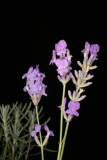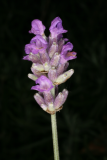Additional notes (click to expand)
Medicinal
Traditional Herbal Medicine Registration (THMR).
Culpeper (1649) “... resist all cold afflictions of the brain, convulsions falling sickness, they open cold stomachs, and open obstructions of the liver, they provoke urine and the terms, bring forth the birth and afterbirth.”
Culpeper (attributed to) , N. Culpeper's Complete Herbal. W. Foulsham, London.
Medicinal uses
Uses supported by clinical data
Inhalation therapy for symptomatic treatment of anxiety, restlessness and
to induce relaxation (19–22). Externally in balneotherapy for the treatment
of circulation disorders (23).
Uses described in pharmacopoeias and well established documents
Symptomatic treatment of insomnia, and as a carminative for the treatment
of gastrointestinal disorders of nervous origin (15, 24).
Uses described in traditional medicine
Orally as a cholagogue, diuretic and emmenagogue; externally for the
treatment of burns, diarrhoea, headaches, sore throats and wounds (15).
Contraindications
Aetheroleum Lavandulae is contraindicated in cases of known allergy to
the plant material. Owing to its traditional use as an emmenagogue and
abortifacient, the essential oil should not be used internally during pregnancy
(50–52).
WHO Monographs on Selected Medicinal Plants. Volume 3. 2007. WHO, Geneva
Other use
Essential oil from flowers used in soap, perfume, cleaning agents, food flavouring, insect repellent. Harvested as soon as flowers have faded for best oil content. Flowers used in pot pourii, insect repellent, as a strewing herb, to repel mice, flowering stems once flowers removed can be burnt as incense.
Plants for a Future at www.plantsforafuture.org.uk
Research carried out by Dr Paul Chazot and colleagues at the School of Biological and Biomedical Sciences at Durham University suggest that essential oil of Lavandula angustifolia and Melissa officinalis may prove efficacious in reducing agitation in patients suffering from dementia.
Chazot et al, Pl . (2008). Pharmacological profile of an essential oil derived from Melissa officinalis with anti-agitation properties.
Geographical distribution
- Europe, Southeastern Europe, Italy
- Europe, Southwestern Europe, France
- Europe, Southwestern Europe, Spain
Lavandula angustifolia Mill.
Family: LAMIACEAEGenus: Lavandula
Species: angustifolia Mill.
Common names: Common Lavender; English Lavender
Pharmacopoeia Londinensis name: Lavendulae/Spica vulgaris
Distribution summary: S.Europe
Habit: Sub-Shrub
Hardiness: H5 - Hardy; cold winter
Habitat: Dry, grassy slopes amongst rocks , usually on calcareous soils
Garden status: Currently grown
Garden location: Pharmacopoeia Londinensis 1618 'Flowers' (HSE 1), Arid zones (Q), Plants in pots (POT), Pharmacopoeia Londinensis 1618 'Flowers' (HSE 1B), Europe & Mediterranean (E)
Flowering months: July, August, September
Reason for growing: Medicinal, other use
.JPG)



.JPG)